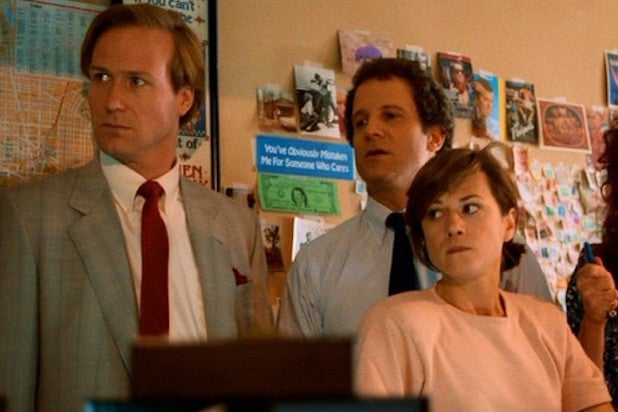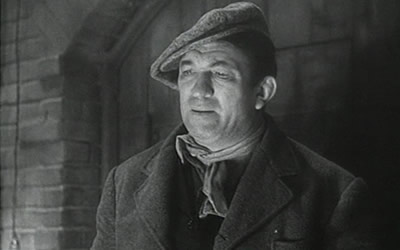It's Official
The latest 25 titles added to the National Film Registry have just been announced. As usual, it's a mixed bag. The people who choose have been charged with picking American films that are "culturally, historically or aesthetically" significant.
So let's look at this year's list and see how they did. In alphabetical order:
1. Bad Day at Black Rock (1955)
I've never been much of a fan of this Spencer Tracy crime drama, but it's got a lot of fans, so I guess it's no surprise to see it in the Registry.
2. Broadcast News (1987)
A very enjoyable film, so I'm glad it's getting some recognition.
3. Brokeback Mountain (2005)
Maybe not as good as people remember, but it is beautifully shot, has some nice performances, and, as a mainstream gay film, is, I guess, culturally and historically significant.
4. Cinderella (1950)
Guess they've already put all the best Disney features in the Registry, so they're going for what's left. Still, a pretty good film.
5. Days of Wine and Roses (1962)
I'm surprised it's not already on the list. Not a great film, perhaps, though it does show Jack Lemmon's range.
6. Dixon-Wanamaker Expedition to Crow Agency
Never saw it.
7. Eve’s Bayou (1997)
An okay film. Not sure if it needs to be on the list.
8. The Girl Without a Soul (1917)
Never saw it.
9. Hair Piece: A Film for Nappy-Headed People (1984)
Never saw it.
10. Hearts and Minds (1974)
Oscar winner, though perhaps today more of historical interest.
11. Hud (1963)
A noted film in its day, and a hit, but not that special. Not surprised it made the list, though.
12. The Informer (1935)
Was considered important in its day, though I don't know if it's held up that well. (And there are already enough John Ford film in the Registry.)
13. Jurassic Park (1993)
A huge blockbuster, and a technological breakthrough, and I guess the Registry wants some of those type films on the list.
14. The Lady From Shanghai (1947)
Not a great film from Orson Welles (and not the first film he made to be taken out of his hands), but is certainly worth watching, and has the amazing mirror sequence.
15. Leave Her to Heaven (1945)
A huge hit in its day. Not great, but does have pretty nice color of 1945 (not to mention the very pretty Gene Tierney).
16. Monterey Pop (1968)
The festival Woodstock wishes it was, and a well-done film that shows us what we missed. Should already be on the list.
17. My Fair Lady (1964)
A passable Oscar-winning adaptation of a Broadway blockbuster.
18. The Navigator (1924)
I'm shocked this wasn't on the list already, as it's often considered Buster Keaton's second-best feature after The General. I don't rate it that high, but certainly good enough to be in the Registry.
19. On the Town (1949)
An overrated MGM musical, but still fun (even if they cut out most of Leonard Bernstein's magnificent Broadway score) and historically significant for its location shooting.
20. One-Eyed Jacks (1961)
One of my favorite Westerns, even if it's not quite what you're expecting.
21. Pickup on South Street (1953)
Sam Fuller's best. Should already be in the Registry.
22. Rebecca (1940)
Helped established Hitchcock in Hollywood, even if it's not that Hitchcockian. Okay to put in Registry after a number of better film from Hitch already made it.
23. The Shining (1980)
Was slammed by the critics when it came out, and they were right. Still, looks pretty impressive and sticks with you.
24. Smoke Signals (1998)
A pretty decent movie, in addition to its cultural significance as a contemporary film about American Indians.
25. Something Good – Negro Kiss (1898)
Never seen it. I've heard it was recently discovered. If nothing else, seems historically significant.








4 Comments:
Since my ignorance of film frequently shocks the various Guys at this blog, I will brag that I've actually seen 4 of these 25 movies! And I know all the lyrics to the songs in My Fair Lady (my mom had lots of LPs from musicals), so that almost counts as number 5.
I disagree that Woodstock wishes it were Monterey Pop. By the music alone, MP was probably greater. But as an event in the history of the hippie counterculture, Woodstock remains far more important. If someone went to the MP festival and ignored the music, they would have missed the point. At Woodstock you could ignore the music and still dig it.
Also, Woodstock was more honest. If someone goes on a drinking binge and you film them for the first twenty minutes, the resulting film is nonfiction but radically misleading. You need to see how the binge ends to really understand what a drinking binge is all about. Hippie culture is the same. The MPF was during the Summer of Love (1967), when it was possible to believe that sex and drugs and rock'n'roll created a beautiful life trip. Two years later, the rawness of Woodstock was more honest (a thousand overburdened porta-potties in the rain and mud ain't no magical mystery tour).
And in the final month of the 1960s, Altamont showed that pure libertinism is ultimately a death trip. Those who got the message were faced with a choice between "Let's get together before we get much older" and "No one here gets out alive".
I've seen several Stephen King movies and read three of his novels, and The Shining is the only one that does't have an ending so awful that it ruins the entire story.
So for that reason alone it should be preserved for posterity in the National Film Registry. Otherwise our descendants will think we were a bunch of idiots for making such an awful writer a billionaire.
For the record, Stephen King did not like Stanley Kubrick's version of The Shining (which took liberties with the book, including completely changing the ending).
King called the film a beautiful car with no engine. He's not entirely wrong, though the 1997 TV version of The Shining is so bad it makes you appreciate what Kubrick pulled off.
Were you filming me, LK?
SWMBCg, etc.
Post a Comment
<< Home